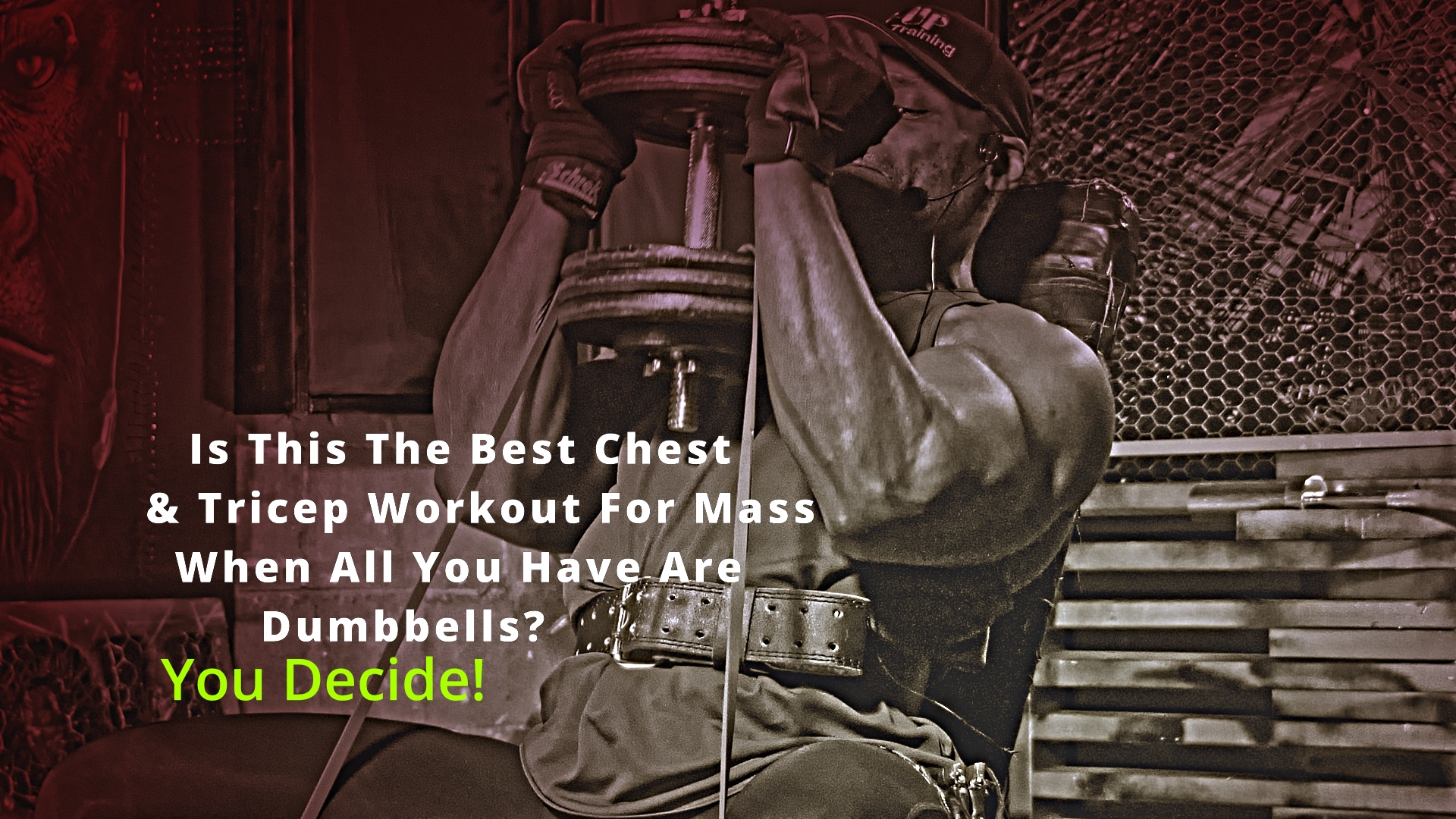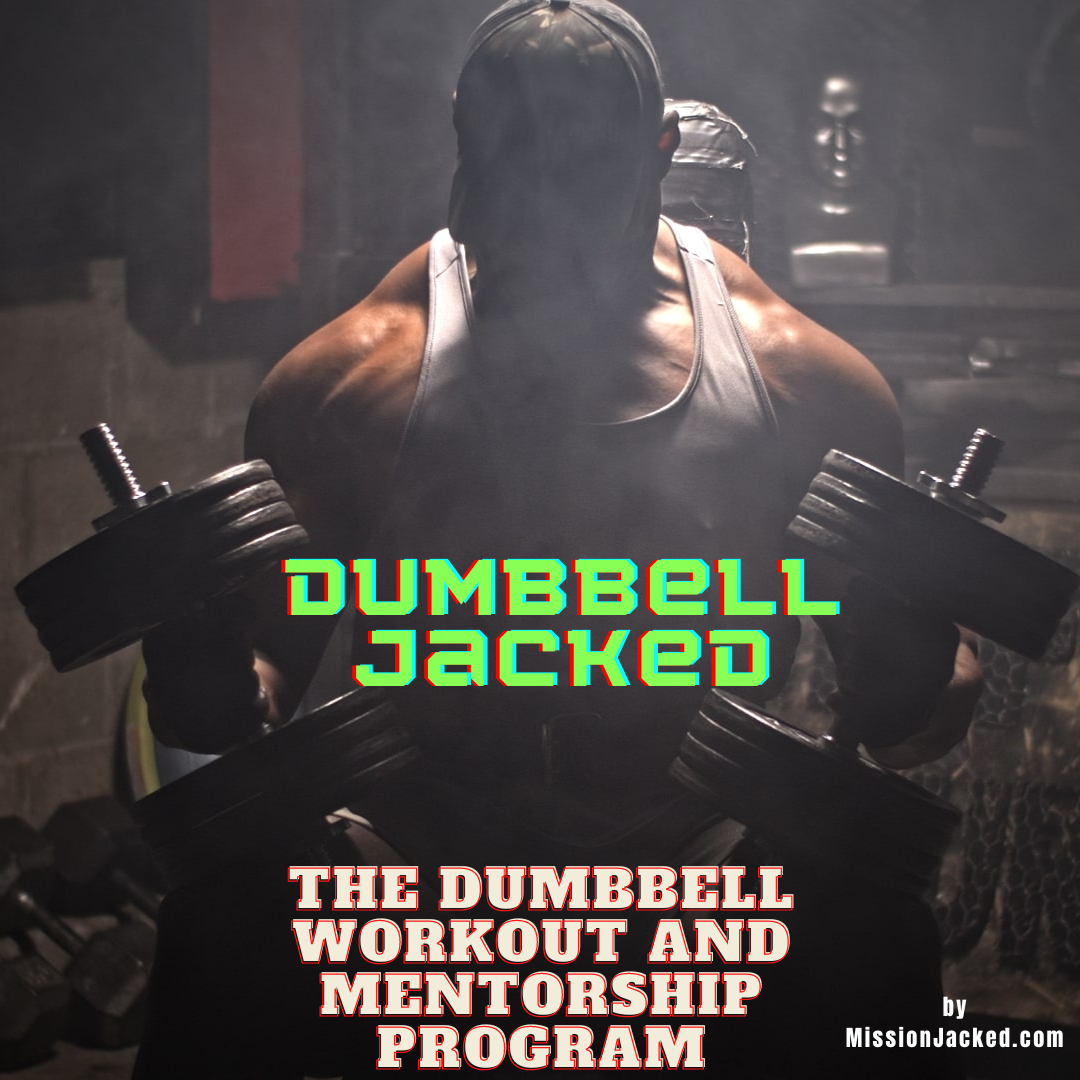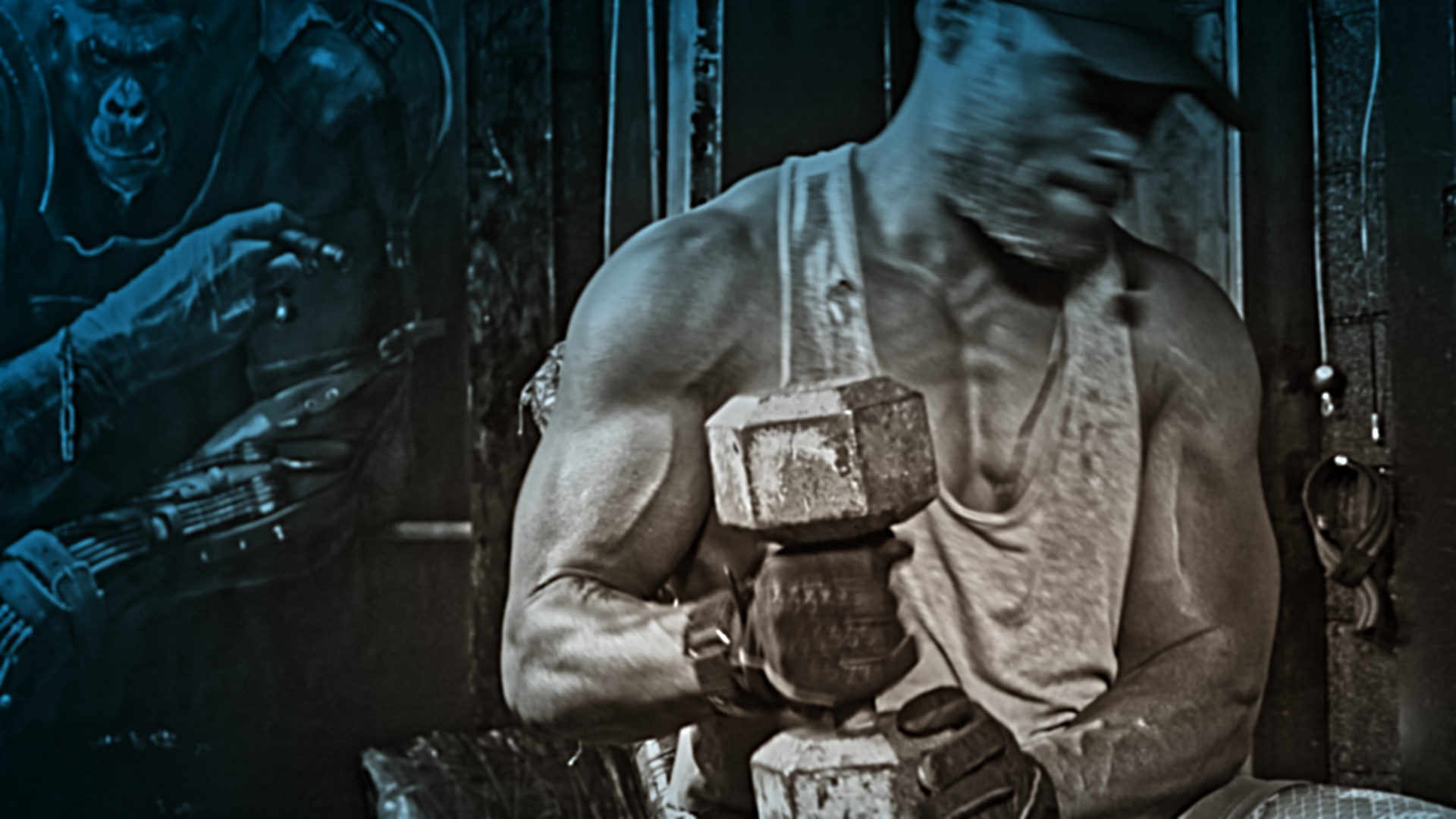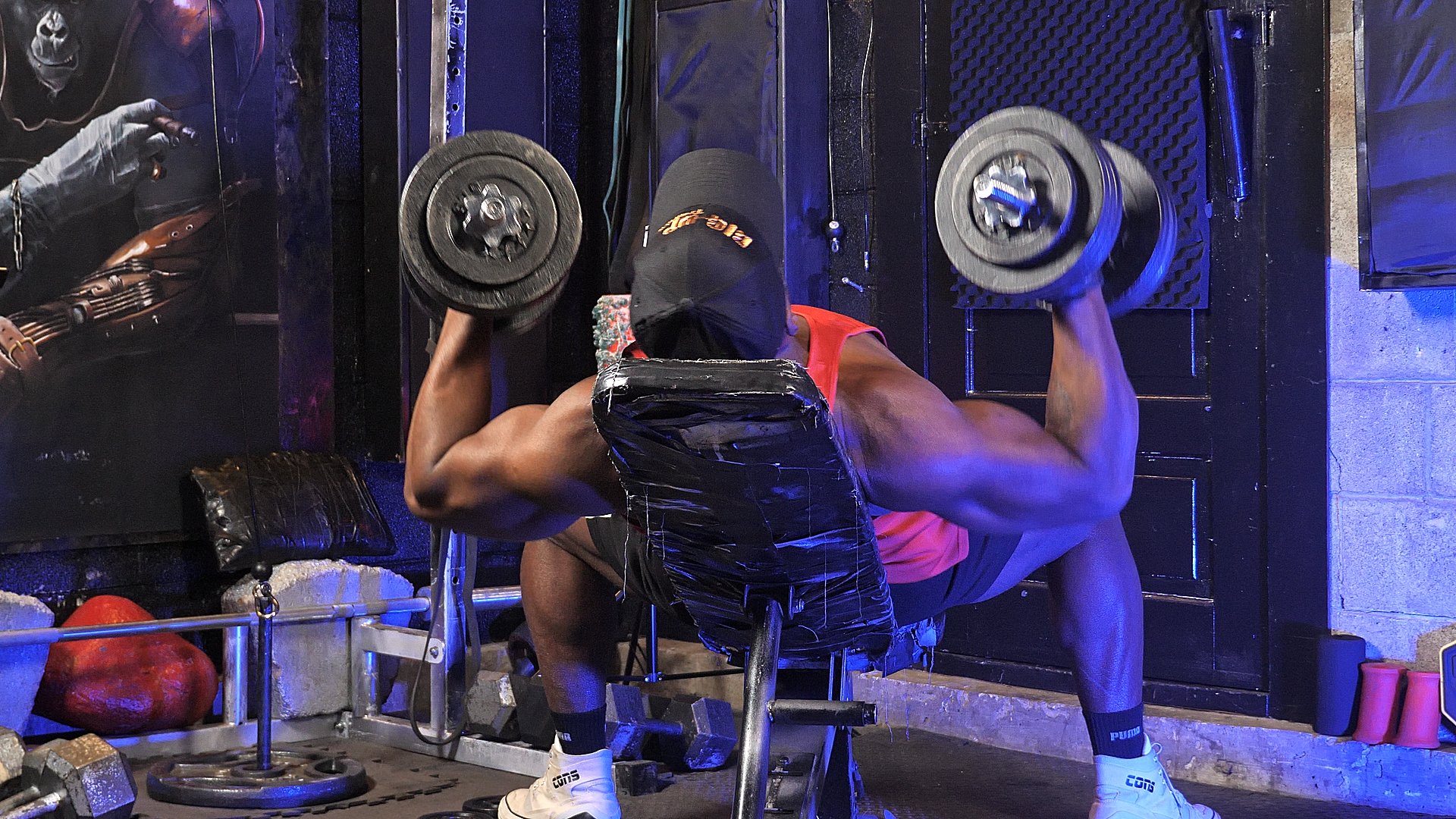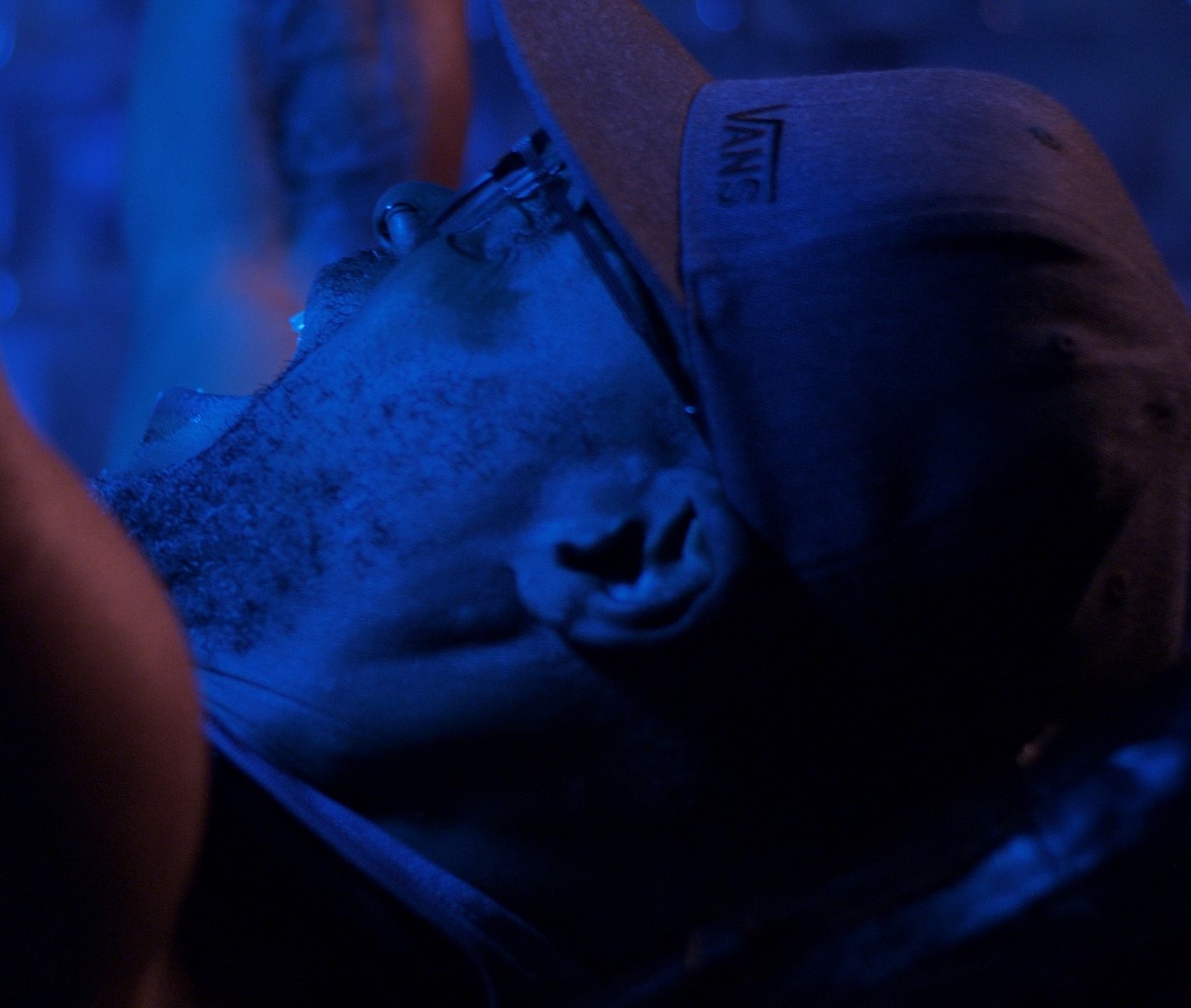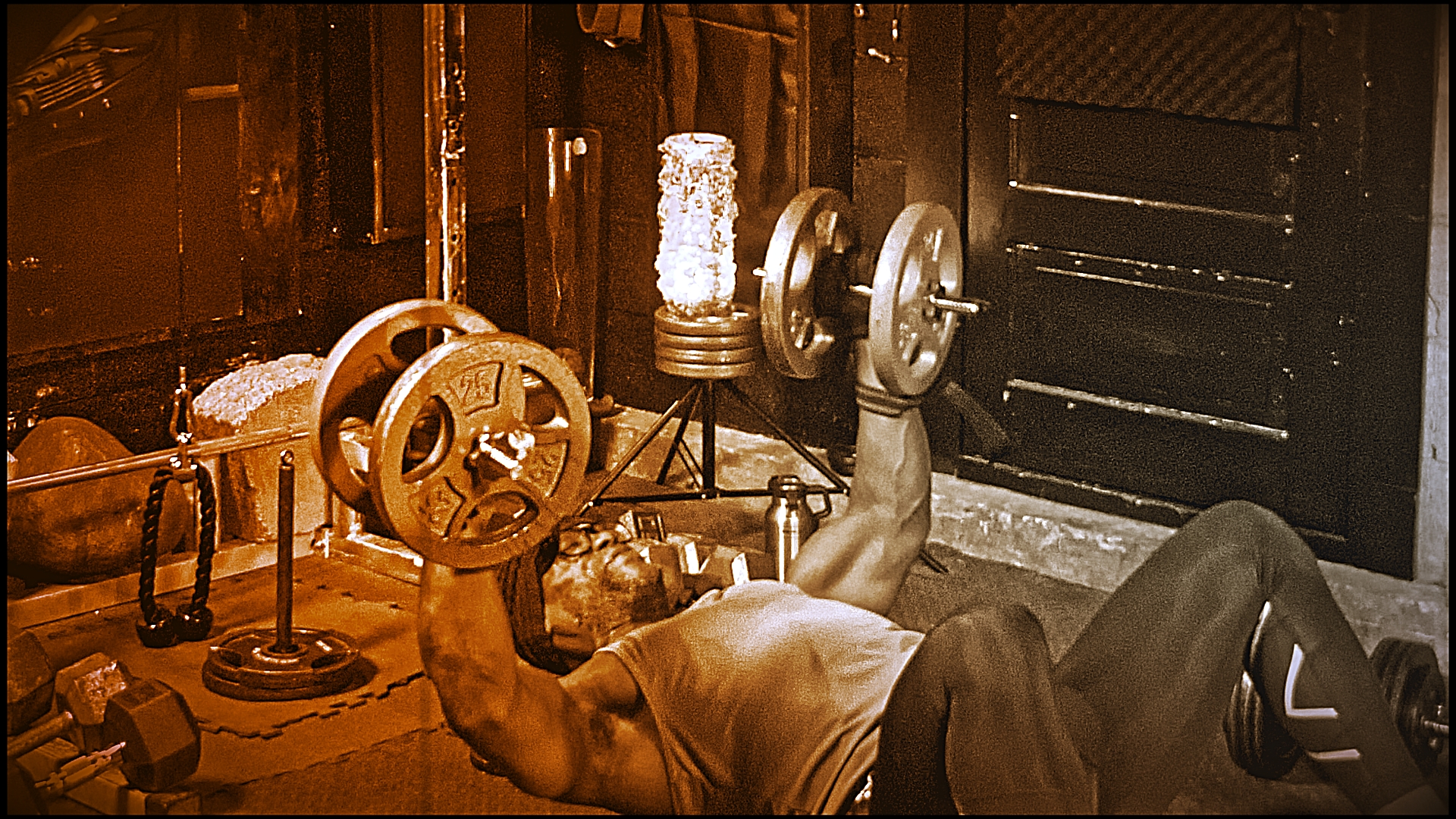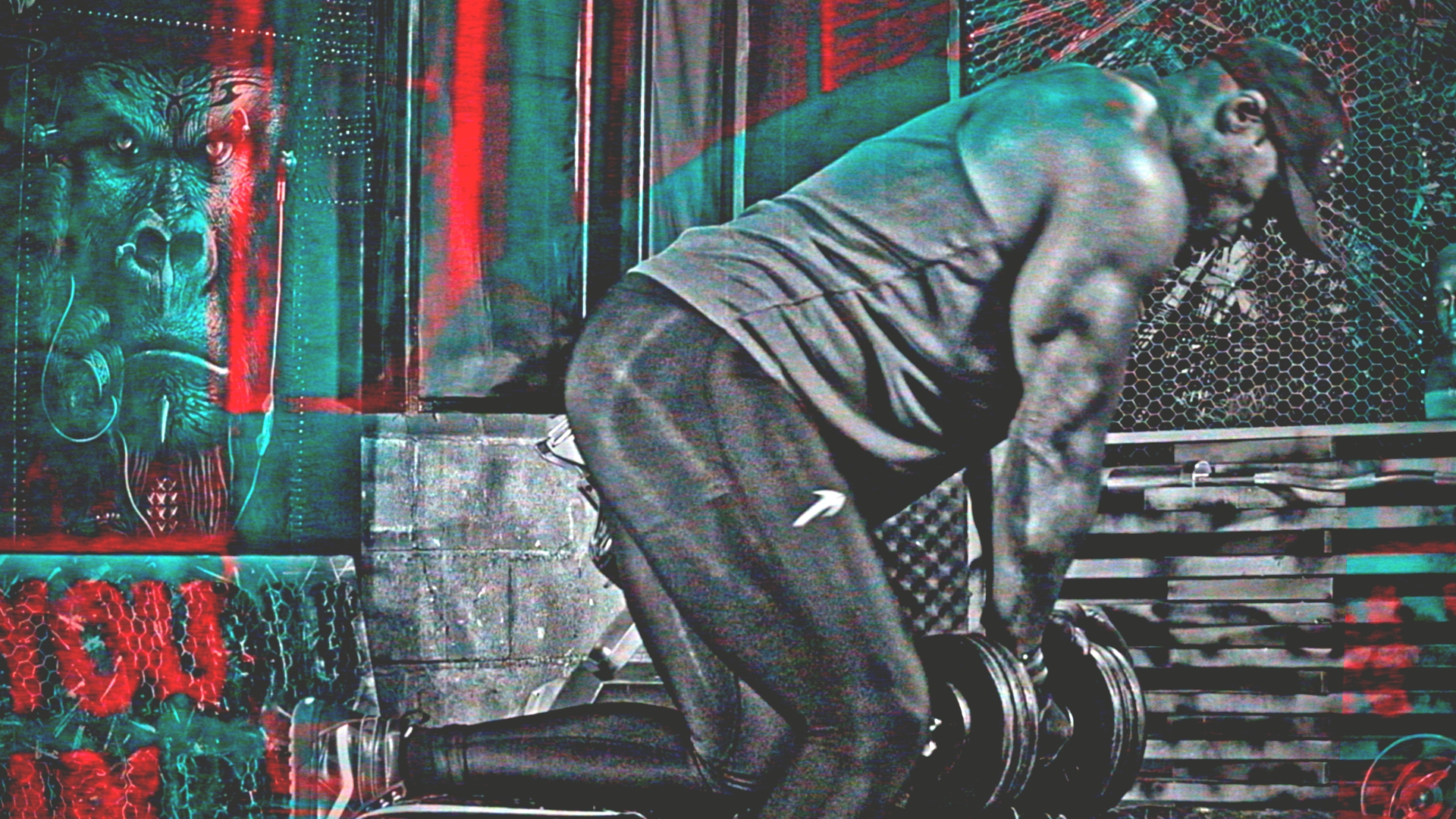Mission Jacked.com
The Guide To The Best Chest and Tricep Workout For Mass Using Dumbbells – Part Two
5 Day Dumbbell Workout
More Jacked Workouts
Get Jacked With This Home Dumbbell Workout for Men
More Chest Building Articles
The Best Chest and Tricep Workout Part Two
Find The Best Dumbbell Only Chest Workout For Size If You Train at Home
Up Your Dumbbell Chest Workout To Stimulating Growth
Dumbbell Chest Workout No Bench - No Problem!
Top 10 Dumbbell Chest Exercises
In our last article, we outlined the best chest and tricep workout for mass using dumbbells for intermediate and advanced lifters serious about building muscle at home. While this sounds great from a 51-year-old natural bodybuilder making his name from improving physiques and building muscle with minimal equipment, the proof is always in the pudding.
 Psymon H., the 51-year-old natural bodybuilder making his name from improving physiques and building muscle with minimal equipment.
Psymon H., the 51-year-old natural bodybuilder making his name from improving physiques and building muscle with minimal equipment.Hi, I’m Psymon H., your online training partner, workout motivator, and the man behind the BIG-UP Home Training System.
In the last article, I laid out 5 exercises we’re going to use to crack open your treasure chest and ransacking the muscle fibers. I also put forward another list of five equally venomous exercises to target and destroy your Triceps. These exercise movements will be split over two chest/tricep workout sessions per week, lasting four weeks. Here's a reminder of the exercises below…
5 Day Dumbbell Workout Plan
The Best Chest and Tricep Workout For Mass Using Dumbbells Workout 1:
• Precision Incline Dumbbell Press
• Reverse and Twist Skull Crushers
Workout 2:
• Standing Fly Into Press & Squeeze
• Decline Dead-stop Dumbbell Floor Press
All cues, pictures and important tips can be found in the best chest and tricep workout with dumbbells part one.
Five Day Dumbbell Workout
In this article, we're going to plug in the two most important drivers that add fuel to the above exercise list. The first driver is the training protocol and the second is the intensity technique; both when discharged properly will turn the exercises from ordinary everyday movements into powerful and effective muscle-building tools.
After everything is said and done, your mission should you choose to accept it is to make this the best chest and tricep workout for mass using dumbbells, grit, and your innermost beast. Make sure to read the full article first to get a better picture of what the best chest and tricep workout for mass will look like for you.
Shoulder Flys
Autoregulation
Training -
The Best Training Protocol For Building Muscle At Home:
There’s a fine line between training hard and being reckless with the iron, especially when you train on your own at home. It's easy to fall into the trap of believing that we need to train with an "until you drop" attitude 24/7.
While the objective should always be to train hard enough to disrupt the muscle, there needs to be a level of control and structure so we can keep on banging weights and building muscle long-term without injury and retaining extreme amounts of fatigue.
Essentially, what we're covering here is a training protocol that ebbs and flows based on your current level of fatigue.
When you use auto-regulation in these chest and tricep workouts, your fatigue will be managed on your performance within a given set. This means that sometimes you lift more and sometimes less weight for the same amount of reps per set and reps in reserve, simply because naturally, you'll push yourself when you’re in an optimal state to perform and pull back when you’re not.
Five Day Dumbbell Workout Plan
The Best Chest and Tricep Workout For Mass Uses Reps In Reserve To Build Muscle:
The first thing you should know about the auto-regulation protocol is that it uses Reps in Reserve (or RIR) as a tool to measure the intensity of effort. If you're new to reps in reserve, don't worry, you'll soon get the hang of this convenient way of tracking workout intensity and measuring how hard a set feels and how many more reps you could have achieved to failure.
Don't mistake the reps in reserve for thinking that the closer you train to failure, the more muscle you'll build. This is an opportunity to get smart about how you train your chest and triceps, and how you manage fatigue over this four-week training cycle.
You're going to practice basing your chest and tricep workouts on how many reps are left in reserve for every working set so that while you measure the intensity of effort, you're still able to manage fatigue over a four-week training cycle. This will be done by having a "Reps in Reserve Target" for each workout.
If you've used reps in reserve before, one of the most significant issues you may have found was coming to grips with how to implement them, mainly if you're used to just focusing on a set number of repetitions per set.
The idea of reps in reserve is easy to understand on paper; for example, you know "2 Reps in reserve" means you leave 2 reps in the tank. However, when you are in the midst of the best chest and tricep workout for mass, how will you start to pinpoint what 2 repetitions in reverse feel like, primarily if you're not used to assessing your performance this way?
More importantly, how do you use this information to develop a meaningful training experience that encourages growth in the chest and triceps? I’m going to show you!
We give you variables you can control and that will help you develop the skill of rating your performance set by set. First, you’re given a reps per set and a reps in reserve target for each working set. This will help you discover your exertion level during both workouts.
Calling Each Set On the Best Chest and Tricep Workout For Mass:
For this example, let’s talk about the chest and your first workout. You have three exercises to complete, using 3-5 working sets plus your warm-up sets. On this first workout, you'll be using the auto-regulation training protocol to train your chest; we'll talk about what you're going to do for Triceps and the second workout a little later. I'll also add a few FAQs to the end of this article to help you along.
You’re asked to perform 7 repetitions on each set, aiming to leave 2 repetitions in reserve.
After the first set of prescribed repetitions has been completed, you'll assess your performance with the specified 2 reps in reserve in mind. You do this by asking yourself a simple 'yes' or 'no' question after each set: "Am I above or below the 2 Reps in Reserve target?"
· If after set one, you undershoot your reps in reserve target, for example, you have 3 or more reps in the tank; you’ll add weight to set two.
· If you overshoot the reps in reserve target where you have 1 or fewer reps in reserve, you will remove weight for set two. You repeat this same process after each set is completed.
· If, after careful consideration, you assess your performance as having 2 reps in reserve, you will keep the same load for the following set and ask yourself the same question again after completing the next set.
As the weeks move on, what you thought were two repetitions in reserve on week one may eventually feel like three or four reps in reserve by week four.
This way of training will help you continuously assess your performance with a "reps in reserve" benchmark in mind. At first, you may have difficulties rating your reps in reserve as a standalone measurement of performance, but because there's a rep-per-set yardstick given for each workout, you only need to assess whether you're higher or lower than the reps in reserve target.
In the above scenario, it doesn't matter if you're always above or below the reps in reserve benchmark; the key is to measure your performance set-by-set and be in a position to adjust the weight accordingly.
Dumbbell 5 Day Workout
Let's Add-In Our Intensity Technique To The Best Chest and Tricep Workout For Mass Using Dumbbells:
On workout one, instead of training your Triceps the same way as you did your Chest using the auto-regulation training protocol, you will use an intensity technique. On workout two, you’ll use the intensity technique to train your chest and the auto-regulation training protocol to train your Triceps.
Time Subtraction Rep Targeting:
You may have heard me mention Rep Targeting in past articles, where you simply set a rep target and obtain that repetition goal no matter how many sets it takes to achieve, for example: say we have a rep target of 40 repetitions, you would choose a weight you can perform 15-20 repetitions with 2 reps in reserve.
· On set one, you performed 18 reps and rested for 30 seconds.
· Set two, you managed 10 repetitions and rested for another 30 seconds.
· Set three, you only managed 8 reps. You took another 30 seconds and then completed the last 4 repetitions.
In our best chest and tricep workout for mass sessions with dumbbells, we’re going to turn up the heat on the above rep targeting method by using the "Time Subtraction Rep Targeting" version. Your rest time between sets is the number of reps you have left to reach your target…Example:
· On set one, you performed 18 repetitions and rest for 22 seconds
· Set two, you performed 8 repetitions and rest for 14 seconds
· Set three, you performed 5 repetitions and rest for 9 seconds
· Set four, you performed 5 repetitions and rested for 4 seconds before completing the final 4 repetitions.
Dumbbell 5 Day Dumbbell Workout Plan
The Best Chest and Tricep Workout For Mass Breakdown:
Workout 1:
Chest: Auto-regulation Training – Using 7 reps per set, aiming to leave 2 repetitions in reserve.
• Precision Incline Dumbbell Press = 3-6 sets
• Roller Fly = 3-6 sets
• Dumbbell Champaign = 3-6 sets
Triceps: Time Subtraction Rep Targeting. 40 repetitions per exercise using a weight you can perform 15-20 repetitions leaving about 1-2 reps in reserve.
• Kneeling Dumbbell Kickbacks
• Reverse and Twist Skull Crushers
Workout 2:
Chest: Time Subtraction Rep Targeting. 40 repetitions per exercise using a weight you can perform 15-20 repetitions leaving about 1-2 reps in reserve.
• Standing Fly Into Press & Squeeze
• Decline Dead-stop Dumbbell Floor Press
Tricep: Auto-regulation Training – Using 8 reps per set, aiming to leave 2 repetitions in reserve.
• Tricep Dumbbell Press
• Incline Kickouts
• Face Scrapes
As you can see each muscle group gets trained differently within the same workout, and on the next workout we swap so over one week (two workout sessions) both muscle groups get one auto-regulation training session and one Time Subtraction Rep Targeting session.
How to Lay Out the Rest of the Training Week:
Once you start hitting the best chest and tricep workout for mass sessions you’ll want to have the rest of your workouts in order. The first thing to realize is that your chest and tricep sessions should be your main focus for the 4-week duration which means that you may decide to do fewer sets for other groups during that cycle. This makes perfect sense as you want to be fresh and at your best for your chest and tricep-focused sessions.
The idea here is to put the other muscle groups into maintenance mode, where you’re working to maintain size rather than growth.
Here’s an example of what a training week would/could look like…
Monday: Chest and Triceps (Session 1)
Tuesday: Back (8-10 sets), Biceps (8-10 sets), and Abs
Wednesday: Quads (8 sets), Hamstrings (8-10) sets, and Calves (8 sets)
Thursday: Chest and Triceps (Session 2)
Friday: Shoulders, (Rear Delts /10 Sets) (Side Delts/10 sets) Calves (8 sets), and Abs
Saturday: Rest
Sunday: Rest
Log All Sets On Your Best Chest and Tricep Workout For Mass Sessions:
This is one of the most important areas often neglected by lifters. When you use the “wing it” approach, how do you hope to remember all the places you've been and how the hell you got here?
However small and insignificant it may seem in the big scheme of things, workouts should be placed in one of three areas, progression, stagnation, or regression. You should acknowledge all facts by recording exercises, sets, reps, and weight.
Numbers don't lie, but at some point, your memory may. Workout logs are the backbone of every well-thought-out workout session including the best chest and tricep workout for mass. It's a benchmark as well as a great form of self-accountability. It's the motivator and the paperback training partner that knows and holds your inner and most personal training secrets.
An easy way to log the auto-regulation exercises is to log the exercise, the weight used on a set, and a score from 1-5 for your reps in reserve. For the reps in reserve, you're aiming for 2 repetitions in reserve. If after asking the question, "am I above or below the reps in reserve target?" you felt you had 4 reps in reserve, you would add the number "4" to your log for that set. I would also put a star by any set where you score the reps in reserve as 2 repetitions in reserve so at a glance you can quickly see what weight you scored "2" on the following week.
Auto-Regulation Training FAQs
Here are some of the best chest and tricep workout for mass auto-regulation FAQs
Q: Is my poundage increase from week one to week two down to me getting stronger, or are there other factors involved?
A: A few factors could play a role in weight increases. In general, you can expect strength to increase over a cycle if all other areas of your training and lifestyle are in check.
Between weeks one and two, it may be that you've become more accurate at assessing your performance using the reps in reserve benchmark. Week one may have been based on guesswork as you get used to the protocol and exercise movements. Naturally, you may have thought that 2 repetitions in reserve on week one may not necessarily feel the same on week two.
It's possible that by week two, your training has become less timid. This could also explain weight increases between the two weeks. Also, if you've changed your rest periods, i.e., going from 60 seconds to 180 seconds between sets could significantly change how much you lift due to ATP being given more time to return to base.
Q: Why have my weights dropped drastically over the space of a few weeks?
A: If you notice your strength decreasing, start by looking at different areas as there could be many reasons why there has been some decline.
Let's start with the most obvious culprit…The Accumulation of Fatigue. Imagine it's week four; you have a few more workout sessions to deload week. If you notice your weights have dropped off, there's a chance that fatigue accumulation has gotten the better of you.
Strength decreases over a few weeks are usually tale-tell signs that you need a deload. In this instant, accept the fact that your body is telling you as much, and if you can do it safely, push through the final few workouts until you get the chance to wipe the fatigue slate clean on the following week.
If you find your poundage decreases very early on in a training cycle, do the following checks first…
1: Nutrition – Is your nutrition in check? Are you missing meals?
Are your calories and protein set at the correct levels?
Do you have enough sodium?
How are your fats and carbs?
2: Sleep – So you’ve had arguments with your significant other long into the night leading to shorter sleep; something as simple as sleep being out of sync could affect your strength levels in the gym and your ability to recover.
3: Outside Stresses: Sometimes, life gets in the way of training; personal, work, and social issues come up and add extra weight to our day. If you're prone to stress and constantly find yourself in the thick end of life, take a step back so you can see the pressures that are within your control and the ones that could hinder your training. Stress management is quintessential to building muscle and keeping cortisol and other stress hormones in check.
4: Is your workout volume too high? It may be that you've surpassed the maximum amount you can complete while being able to recover. While progression and volume increases are essential to long-term muscle growth, you have to find out where your limits lay.
In all of the scenarios mentioned, you have a certain amount of control. If you're serious about the best chest and tricep workout for mass training sessions, you have to make sure these areas are covered as best you can.
If all areas are optimized and your strength levels have not returned, I would drop a set or two, and if you see no change, take an early deload week and restart the cycle. Here's another reason why you should claim your free "Post-Workout Blueprint" download. There are ten essential ingredients that will aid your recovery. To get this valuable download, join our "More Jacked" newsletter.
Q: Should I increase my weight on the next set if I score two reps in reserve?
A: If I'm performing three sets and on the second set, I score my effort as 2 repetitions in reserve, I will keep the same weight for my final set and after completion of my last set ask myself the question, "am I above or below the reps in reserve target?"
Q: What weight do I start with in week two?
A: If you scored the reps in reserve target on week one and your energy levels are high on week two, I would warm up to use that same weight as my starting weight for week two. A lot will depend on how you feel going into your workout session. After your first set, all set weights will be determined by the performance scored on the previous set.
Q: If I overshoot my reps in reserve by one or undershoot it by one, what weight would I use for the following set?
A: As upper body muscle groups are naturally weaker than lower body muscle groups, you may decide that increments of 2.5lb, either way, are best. Trial and error will always be your best teacher.
Q: Is it possible to score set one as 2 repetitions in reserve, use the same weight for set two, and score it as 3 repetitions in reserve?
A: In short, if you carefully consider how you score set one, you are less likely to find yourself in the above situation. Finding yourself in the above scenario is more likely to happen on week one while you're still getting used to accurately accessing each set. The more you practice scoring your performance after every set, the better you'll become at giving each set an appropriate score.
Q: On completing training on week 2, I outpaced my previous performance and hit much higher numbers without significant disruption to my muscle groups; what should I do on week 3?
A: After careful consideration, you judged your reps in reserve score as good, and your chest and triceps feel pretty messed up but not cooked to the point you don't feel ready to train; this could be an indication that you may need to increase the volume by one or two sets over the two workout sessions.
Time Subtraction Rep Targeting FAQs:
Q: Is it possible to complete this intensity technique inside two sets if I perform 20 reps on set one, rest 20 seconds, and complete the final 20 repetitions on set two?
A: This would be difficult if you're using a weight that commits you to 20 repetitions with 2 or fewer repetitions left in the tank. In my experience, you would be hard-pressed to complete a further 20 repetitions with only 20 seconds of rest. While this may not be impossible, in such situations I would have to question the weight used and the number of repetitions left in the tank on the completion of the first set.
Q: What should I do if I complete more than 20 repetitions on set one?
A: If you complete more than 20 repetitions on your first set, make a mental and physical note to increase the weight the next week you attempt the same exercise.
Q: What should I do if I only complete 12-15 repetitions on my first set?
A: Make a note to lower the weight the next time you complete the exercise (the following week)
Q: What happens if I only have two repetitions to complete the 40 rep target?
A: you rest only 2 seconds (or one deep breath) and complete the final two reps.
Adding In Swap-Out Option To The Best Chest and Tricep Workout For Mass
A great way to individualize the best chest and tricep workout for mass sessions is to swap out and replace an exercise in the auto-regulation training for one from the rep targeting list.
Example: On week three, you want to swap the auto-regulation exercise, Precision Incline Dumbbell Press to a Time Subtraction Rep Targeting exercise; you could replace it with the Decline Dead-stop Dumbbell Floor Press.
I would wait till week three to make any changes so that you have numbers to compare from week one to week two.
You could also wait until you've completed one four-week cycle and then swap around the exercises for a second 4-week spin.
What is a Deload Phase & Why Should You Add it To The End of Your Best Chest and Tricep Workout For Mass Cycle?
A Deload phase usually lasting seven days is a cruise mode strategy used to reduce volume and intensity to give the muscles and body systems a momentary break. It's an opportunity to lessen the accumulation of fatigue built up throughout a training cycle.
As tendons and ligaments take longer than muscles to recover from workout accumulation, deloads offer them time to heal and catch up. Deload phases are based on how the body reacts and recovers from the stress of doing a series of workouts.
Muscles break down through stress applied during workouts resulting in a temporary decrease in fitness and strength. As the muscles recover on rest days and deload phases, adaptations are made, and muscles bounce back bigger and stronger. This is known as supercompensation.
When muscles are pushed past the point where a deload phase is recommended, fatigue, a decrease in strength, joint pain, and little motivation to train are specific symptoms. Taking a week off training may seem the most logical solution to discharging fatigue buildup, but the risk of taking time off is that you may lose some of the adaptations made over the past training cycle.
Undergoing a deload phase that is easy compared to regular training will conserve adaptations in strength and muscle gains while removing fatigue. If a deload week is as hard as a typical training week, your body will have no chance of expelling fatigue accumulation. There needs to be a clear difference in intensity and volume in a deload phase compared to a regular training week.
Click here for your list of exercises and cues.
Learn chest anatomy
Don't forget to subscribe to our "More Jacked" newsletter to get your free "Post-Workout Blueprint" by signing up below.
Enjoyed our best chest and tricep workout for mass with dumbbells part two? We would greatly appreciate it if you would share this article with your community by using the social media share buttons at the top or bottom of this page.
If you have any questions concerning the best chest and tricep workout for mass, you can contact me below.
Get Jacked With These Workouts
After You Complete The Best Chest and Tricep Workout For Mass using Dumbbells, Build the Rest of Your Physique !
1: Enter the Back-Lands with these 7 Dumbbell Lat Exercises To Build A Monster
2: Master True Dumbbell Lateral Raises and the 7 Variations to Develop King-Kong Side Delts
3: If you want the best rearmost view, don't miss out on these dumbbell Rear Deltoid exercises
4: Looking for a home Bicep workout with dumbbells to get sleeve-ripping arms?
5: We throw you in the deep end and leave you to do all of the leg work with these dumbbell Quad and Hamstring exercises.
6: More Dumbbell Chest Workout Articles
7: Top 10 Dumbbell Chest Exercises For 2022!
Dumbbell Clean and Press Your Way Up To A Stronger and Fitter Physique
Mission Jacked L.L.C
Address: 9407 NE Vancouver Mall Dr
STE 104 #1269
Vancouver, WA 98662 USA
Email: mission@missionjacked.com
